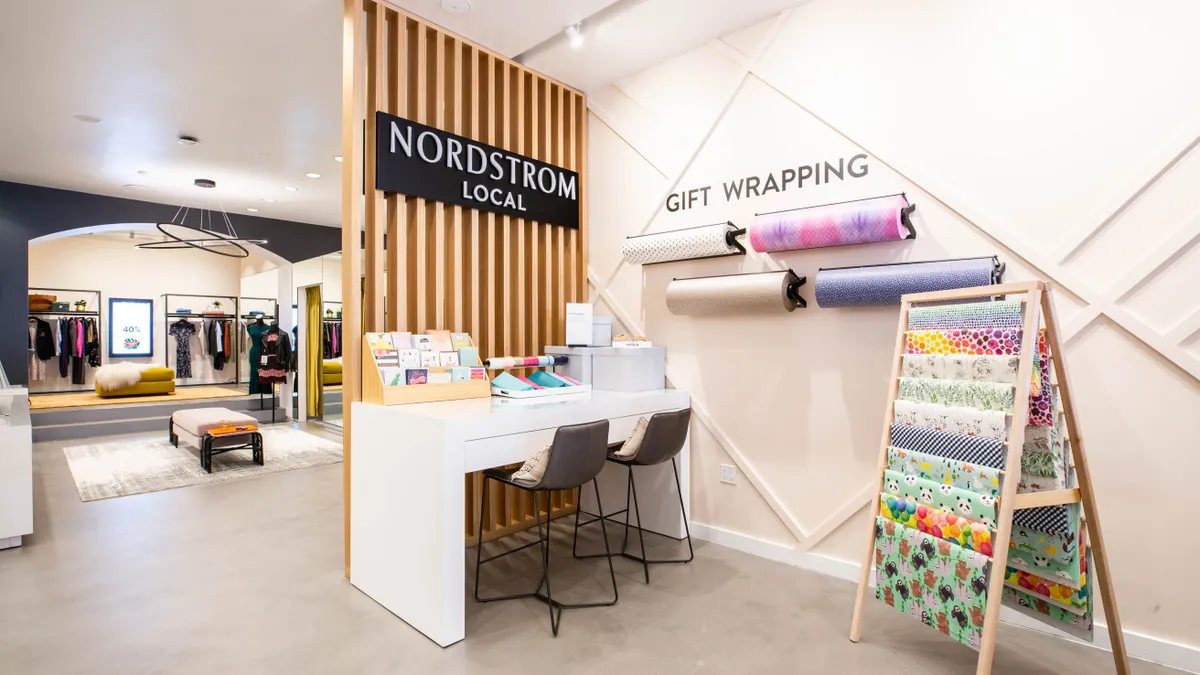NEW YORK — Retail may be on a store closure tear — more than 9,000 announced last year, with another 757 already this year— but it's clear from several analysts and executives speaking at the National Retail Federation Big Show that the key to the industry's future success is found in brick and mortar.
That notion is coming from the founders and leaders of cutting-edge retail concepts like Showfields, Area15, Enjoy and Neighborhood Goods as well as from the likes of Nordstrom, which opened a flagship department store and two merchandise-free Local stores, all in New York, in just the last few months.
"The best retailers have innovated, so that the physical store has the upper hand again," Ron Johnson, CEO of tech home service company Enjoy and widely considered the visionary behind the Apple store, told a keynote audience on Sunday.
The appreciation for physical retail comes as several online pure-play brands have struggled to make a profit, with the cost of customer acquisition remaining stubbornly high. Casper Sleep was the latest to reveal that it's been racking up losses — to the tune of more than $90 million in 2018 — and doesn't expect to be profitable for a while.
Getting customers, and loyal ones, is more easily achieved when physical stores are in the mix, several experts said in various panels during NRF's first conference day. When it comes to customer acquisition, "physical retail is more effective than a billboard," Matt Alexander, co-founder and CEO of Neighborhood Goods, a brick-and-mortar curator of brands (with locations in Plano, Texas and New York), that is often billed as a "new kind of department store."
Doug Stephens, speaking Sunday evening at a gathering of Microsoft teams involved in retail, said that as digital advertising has proliferated, it's also lost its edge. "Digital advertising has become marginalized," he said. "We are swimming in a sea of media and communication from brands. Stores are the new channel for retail. Stores are an incredibly powerful means of bringing people together."
Alexander agrees. "People don't like getting too many emails," he said. "People don't like being sold to."
The idea that human connection is integral to the effectiveness of physical retail space had already been expressed throughout the day by others. It was invoked by both Dan Pelson, chief operating officer of AREA15, (a mall-like "retailtainment" complex opening in Las Vegas in April), and Tal Zvi Nathanel, (co-founder of and CEO Showfields, a four-story, 14,707-square-foot experiential space in New York that works with emerging online brands), speaking at a featured session on the future of shopping (moderated by Retail Dive). Both said that the human desire for gathering and connection represents one of retail's most highly prized elements, a driver of traffic.
"The biggest value we can give the founder of a brand is to interact with his customers," Nathanel told Retail Dive in a post-session interview. "If we can stand for three hours on a Saturday in Showfields, you could interact with a 1,000 people."
That doesn't mean that retail should simply return to its 20th century business methods. Nathanel, Pelson, Alexander, Stephens and Kevin McKenzie, (a partner at CrowdedSpaces, which derives analytics and measurements from physical retail), all emphasized the importance of creating compelling spaces, providing good customer service, flexibility in how space is used, and assessing the utility of brick and mortar, often with analytics technologies to measure in-store activity.
That means calculating a store's marketing value and not just its top-line sales. Crate & Barrel CEO Neela Montgomery, speaking during a keynote address on Sunday, said the retailer has taken into account that a customer may decide to buy thanks to their store visit, but the sale may not be made at that store. That demonstrates a physical store's influence in customer acquisition, the metric that appears to be falling short at so many DTC brands.
"We're not accounting for the value of stores," Stephens said. "Buying advertising doesn't work anymore. Stores are not about the distribution of products anymore, they're about the acquisition of customers."





















